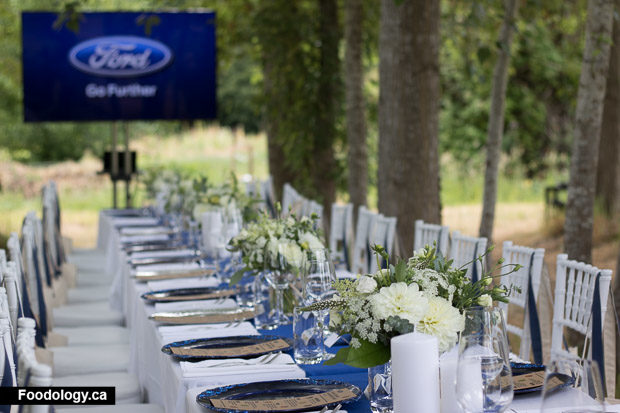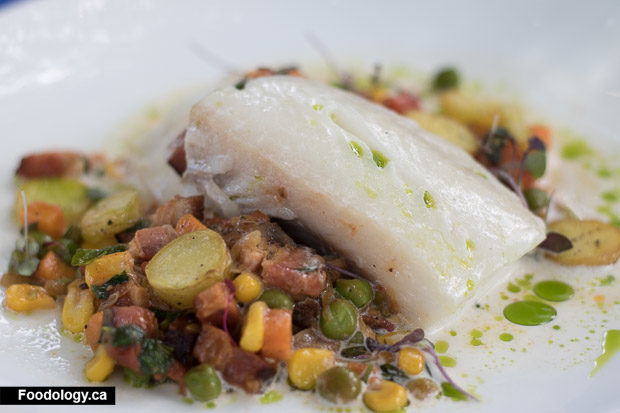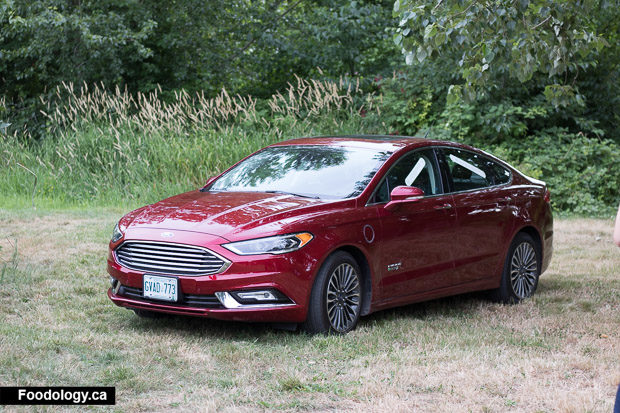
Food by-products, oversupply and other biomaterials are getting a second life in Ford vehicles. This is more important than ever as the world is changing and we only have one planet and scarce resources.

We were invited to see first hand how they are using soy beans, rice hulls, wheat straw, coconut and cellulose in their current Ford vehicles. What goes into a vehicle at the beginning of its lifecycle and what comes out of it at the end of production contributes greatly to its environmental friendliness.
Currently in Vehicles
Soybeans
As much as I love soy it surprised me that since 2011, all Ford vehicles built in North America have soy foam in their seat cushions and backs. This saves an estimated 2.3 million kilograms of petroleum per year.
Rice Hulls
Rice is a staple in many diets, but what do you do with the fibrous rice hull after? In 2014, Ford introduced a new composite plastic material reinforced with rice hulls in the wire harness of the Ford F-150.
Wheat Straw
Wheat straw-reinforced plastic is used in the storage bins of the Ford Flex – the world’s first application of this material. The use of wheat straw-reinforced plastics in the Flex reduces our petroleum usage by
some 9,000 kilograms and our CO2 emissions by about 13,600 kilograms annually.
Coconut
Coconut coir, made from coconut husks, is used in the trunk mats of some vehicles, including the Ford Focus Electric.
Cellulose
This material is being used to replace fibreglass reinforcement in the centre console. The material reduces weight by approximately 6%. It also has a smaller carbon footprint than the glass-fibre-reinforced plastic it replaces, in part because it takes less time and energy to mold cellulose- reinforced parts than traditional glass-fibre-reinforced plastics.

Being Tested
Sugar Cane
Sugar cane–based plastic has been made into interior fabrics and is being tested for durability and performance.
Tomatoes
Ford is collaborating with the H.J. Heinz Company to explore using tomato fibre, a byproduct of ketchup production, to develop a more sustainable bio-plastic material in vehicles. Ford researchers are
testing the material’s durability for potential use in vehicle wiring brackets and storage bins.

Corn
Agricultural corn by-product can be processed into plastic parts, fabrics, fibres or films. Ford is currently testing the product for potential uses in carpeting, upholstery and interior trim.
Bamboo
Bamboo is a fast-growing grass—up to 4 cm per hour—that is being researched for potential uses in veneers and as filler material.
Algae
Algae is a promising sustainable material being researched by Ford. It grows very quickly, replicating up to four times per hour, and has a high per acre yield when compared to other crops.
Final Thoughts

It’s pretty awesome to see Ford using all these food by-products to incorporate into different parts of their vehicles. It’s innovative to hear and see it all being put into action. It keeps these food items from being wasted even though they are mighty tasty. Hopefully other car companies follow suit too.
More info: http://blog.ford.ca/take-closer-look-whats-ford-vehicle/



1 Comment
I have a Nissan Cube (my little baby 💕) but now I want to own a Ford because of how sustainable they are! Thank you for sharing!